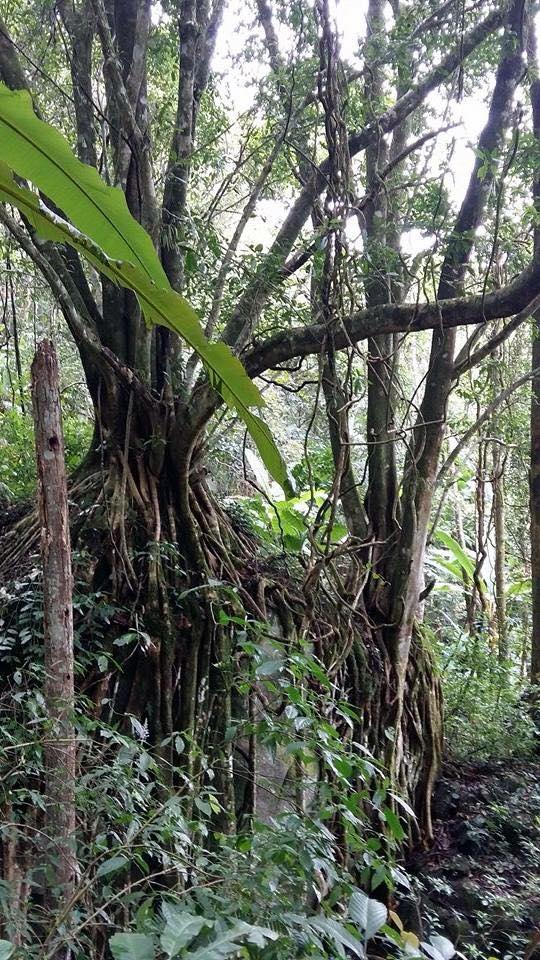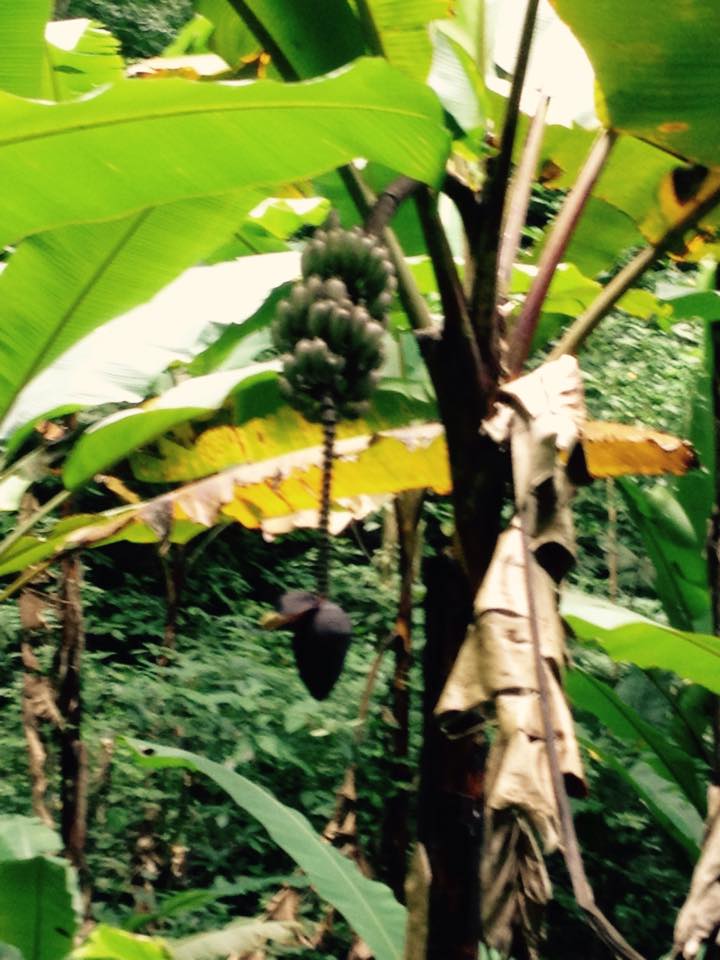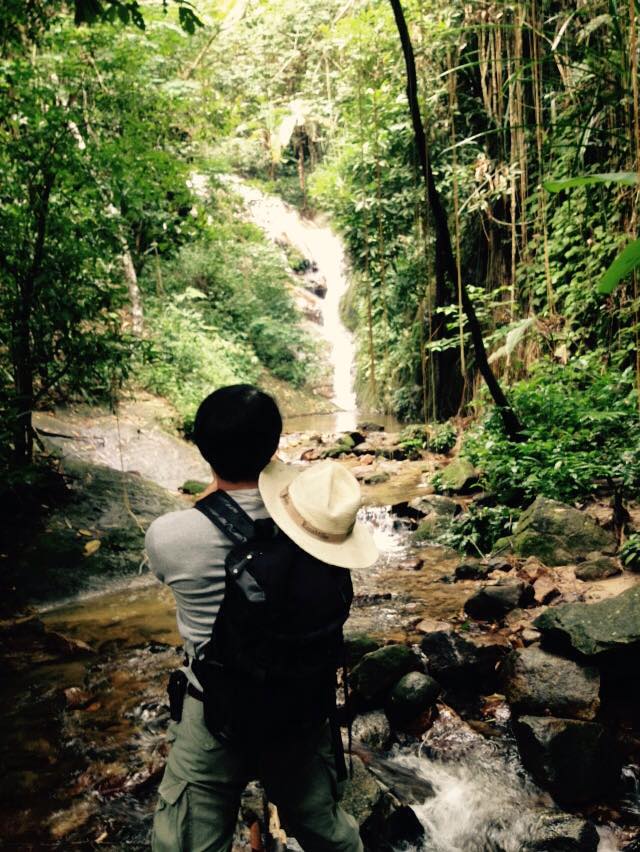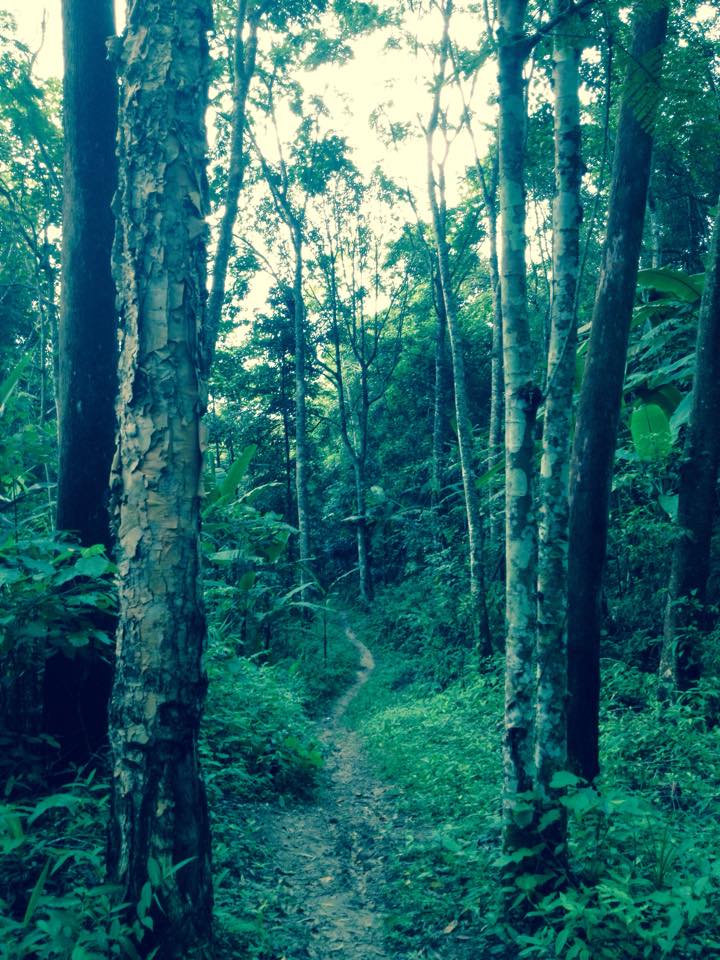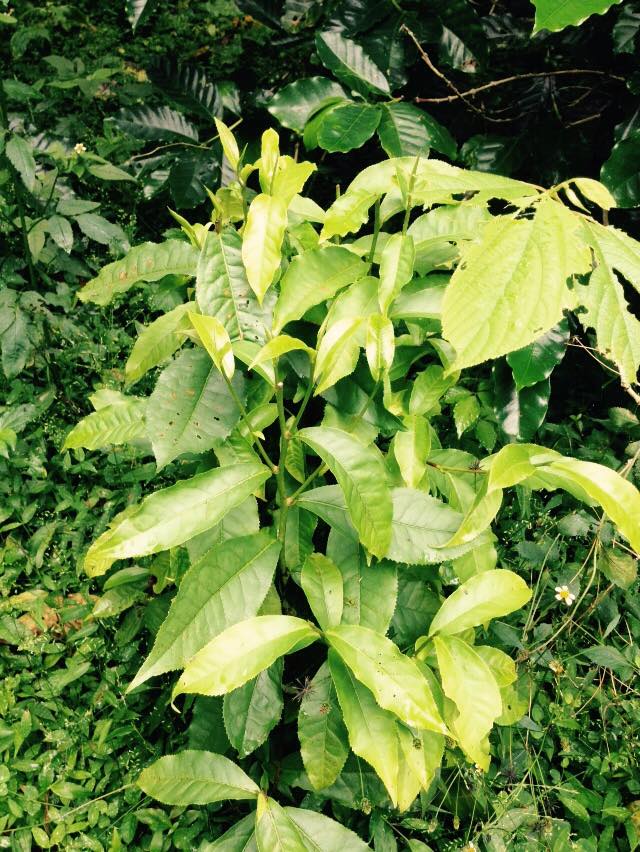Chae Son National Park, Chiang Mai, Thailand
Chae Son National Park covers a 700 square kilometre mountainous forest area at the meeting point of Chiang Mai and Lampang provinces. Mountains in the park form Pee Pan Nam mountain range with the highest mountain Doi Langka which, at 2,031 metres above sea level, is also third highest mountain in Thailand. Pee Pan Nam mountain range has a number of streams running down its slopes and is an important water source for the surrounding area.
The mixed dense forests covering this area are evergreen, deciduous, and tropical deciduous with diverse tree species such as:
- makha trees (Afzelia xylocarpa) which have trunks measuring up to 2 metres in diameter
- Indian mahogany – an important Ayurvedic medicinal plant
- red cedar which grows quickly and can top all other trees at the maximum height of 60 metres
- persimmon trees
- tabaek with beautiful pink flowers
- evergreen yang na that likes to grow along river banks
- Sumatran pine
- Khasi pine
- teng whose bark is used as malaria medicine, and many more
Below the highest treetops grows a variety of smaller trees and plants from fruit trees, palms, several bamboo species to ferns, orchids, and other flowers all comprising a dense undergrowth.
Apart from the naturally occurring plant species, a lot of land in the area is also cultivated by local villagers and there is also a Royal Agricultural station. Agricultural land in this area is used for planting rice, growing mushrooms, and dragon fruit, but most notably local villagers grow coffee and tea in forest gardens.
Dense forests and agricultural land in Chae Son National Park offer shelter to a variety of mammal species such as:
- Sumatran serow – a goat-antelope species
- muntjacs or barking deer which are the oldest known deer species dating back 35 million years
- little mouse-deer which can also be traced back to Oligocene
- nocturnal Burmese hare
- Malayan flying lemur who is not a lemur and doesn’t fly but glides as it leaps from tree to tree at night
- langurs – an arboreal primate species living in trees
- macaques who are the most wide spread primates after humans and maintain an intricate social structure
- Asian golden cat called seua fai (“fire tiger”) who, as the Karen people believe drives away tigers
- porcupines with coats of sharp spines
- treeshrews – small mammals with the highest brain to body mass ratio
- and wild boars to name some of the most notable species
Unfortunately these mammal species are rarely seen nowadays due to decline in population owing to various, mostly human induced factors, such as deforestation and hunting for food, medicine, domestication, and superstition.
Birds are much easier to spot in the treetops and include:
- a talented songster white-rumped shama
- red junglefowl believed to be an ancestor of domestic chickens
- woodpeckers who like to drum and hammer with their bills not only in search of food in tree trunks, but also as a part of their foraging, breeding and signaling patterns
- highly vocal bulbuls whose nasal songs are not pleasing to everyone
- solitary Asian barbets
- little brightly coloured tailorbirds
- green pigeons
- highly vocal warblers
- terrestrial babblers
- and doves
Apart from mammals and birds the area is also home to even more diverse and numerous amphibian, fish, insect and reptile species. The area around Chae Son hot springs gets a visit from numerous cicadas every April and local people believe that they like to drink mineral water there.
Ban Mae Kampong
Ban Mae Kampong is one of seven traditional Thai villages in Huai Kaew sub-district of Chiang Mai province. The village is located in the mountains, 50 kilometres north-east of Chiang Mai city. Ban Mae Kampong gets its name after streams that pass through the village (mae for river) and a local flower called Dok Kampong that grows by these streams.
The first settlers migrated from Doi Saket district more than a hundred years ago as they searched for land to cultivate forest tea orchards. After they built the settlement, the Khmu ethnic group also migrated to the area in search of work and they settled as tea farmers and later assimilated to local culture. Ban Mae Kampong was officially set up in 1914.
At the time of first settlement the area was densely forested and the forests were home to various wild animal species. Local villagers were self-sufficient and only occasionally bought basic necessities from outside the village. As the village grew, both from the natural increase and migration, the villagers constructed a Buddhist temple to serve as the village’s spiritual centre. That is when Buddhist monks from the lowland villages came to Ban Mae Kampong to live in the temple. At present, about 95 per cent of villagers are Buddhists.
Today the village area is divided into agricultural area (60% of the land) forest (25% of the land) and residential area (15% of the land) and about 95 percent of over 400 villagers are Buddhists. Ban Mae Kampong is still primarily a fermented tea producing community with a majority of villagers working in fermented tea production although the villagers also grow rice and have recently started to grow coffee as the coffee prices rise and miang prices drop.
Current village leader came up with an idea to start a community ecotourism in Ban Mae Kampong in order to provide more jobs and better income for the villagers and also to protect local forests from illegal encroachment. The project started in 1999 and is now a part of into the government’s “One Tambon One Product” Program (OTOP). All villagers support the idea of community ecotourism and are well educated in the field. They offer village sightseeing, cultural shows and home stays as part of the project and employ environmentally friendly agricultural principles to their farming practices.
Miang or fermented tea leaves
Pickled tea produced in Ban Mae Kampong is locally called miang. Miang is pickled or fermented Assam tea leaf that originated among ethnic and hill tribe groups in northern Thailand and is today a staple of northern people.
Tea gardens flourish in highland forests, on hillsides and slopes with plentiful water. Villagers plant tea seedlings in space between two large trees and this type of tea cultivation has no detrimental effect on the environment. They don’t use fertilizer and only occasionally trim the bushes and remove the weeds.
Villagers harvest tea leaves four to five times per year and then tie them into small bunches to steam them. They then roll steamed leaves into a ball with salt, oil, garlic, pig fat, and dried fish and leave them to ferment for 2-3 months or longer. After the leaves ferment, villagers like to eat them as a snack and use them in various ceremonies. Tea leaves are a source of energy. They also use the leaves in cooking and for the aromatherapy products. Fermented tea leaves have a sour and flowery taste.
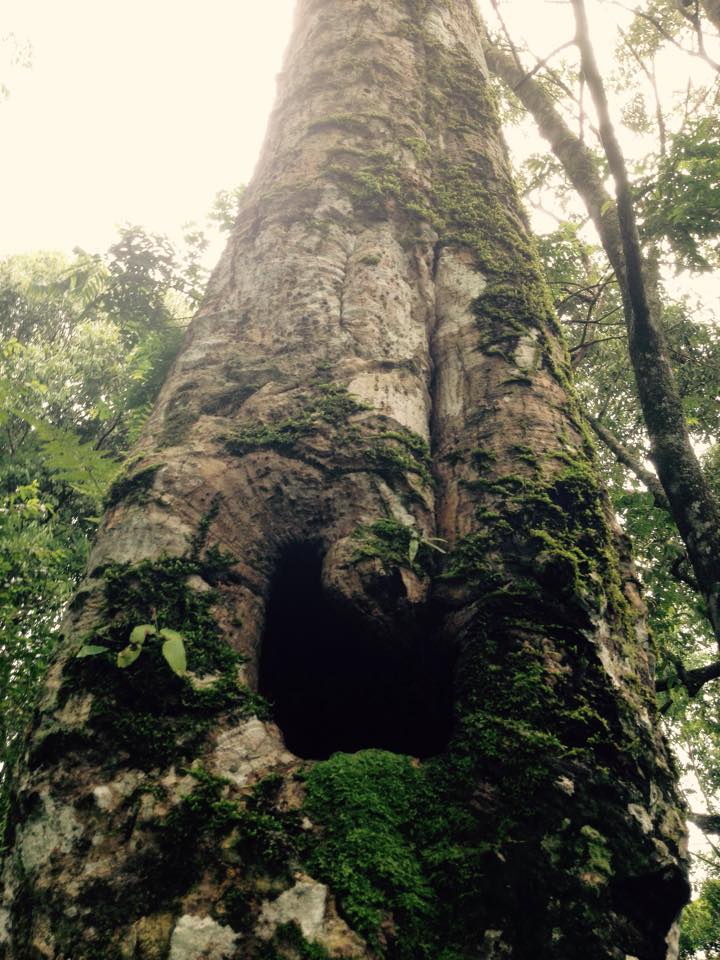
Trekking tour in Chae Son National Park
Day trekking tour in Chae Son National Park takes in the highlights of this lush natural area: diverse flora and fauna, scenic mountain views, seven-tiered waterfall, Ban Mae Kampong and hot springs.
